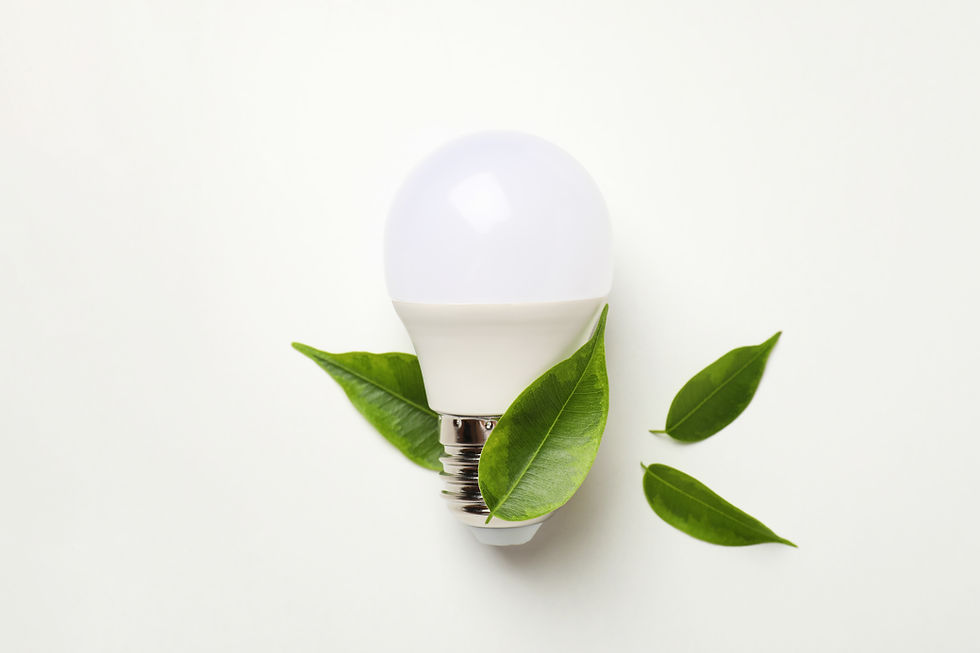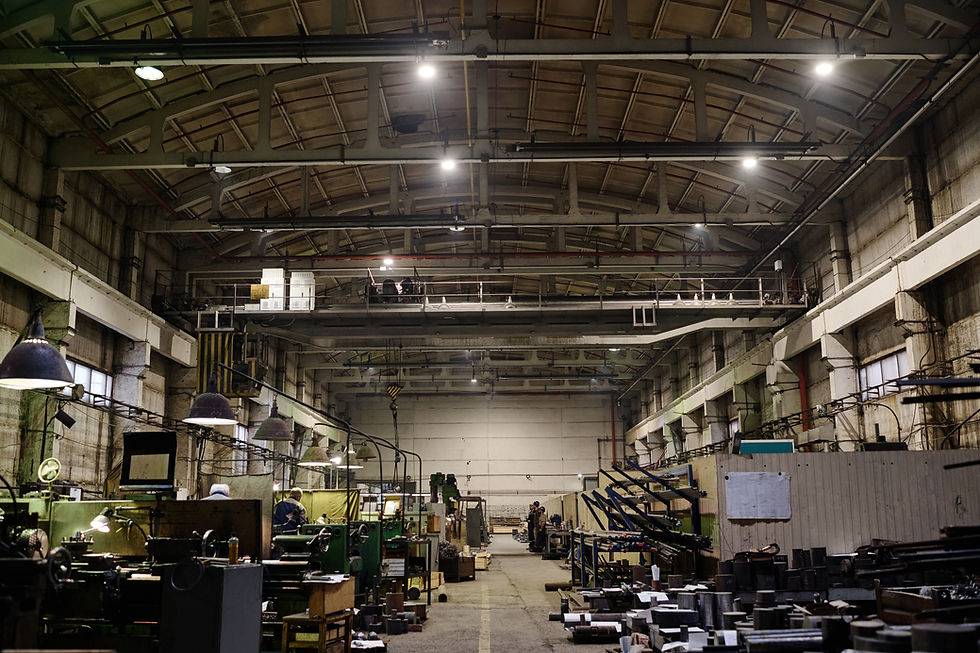How LED Lighting Can Reduce Your Facility’s Carbon Footprint
- floomarktechnology
- Jul 22
- 4 min read

If your business is working toward sustainability goals or just looking to cut down on operating costs, upgrading your lighting might be the easiest place to start. Many facilities across the U.S.—from warehouses to retail stores—still rely on outdated lighting systems that burn through electricity and rack up carbon emissions. But there’s a smarter, more eco-friendly option: LED lighting.
Switching to LEDs doesn’t just save money—it also helps reduce your facility’s carbon footprint in a big way. In this article, we’ll break down how LED lighting makes a measurable difference for the environment and why it’s one of the best investments your facility can make.
What’s a Carbon Footprint—and Why Should You Care?
Your facility’s carbon footprint is essentially the amount of greenhouse gases—mainly carbon dioxide (CO₂)—it produces through operations. One of the biggest sources of these emissions? Energy use. And lighting often makes up a large chunk of that energy.
In commercial buildings, lighting can account for up to 40% of total electricity consumption, according to the U.S. Department of Energy (DOE). If your facility is still using older lighting like fluorescent, halogen, or metal halide bulbs, you're likely consuming more power than necessary—and generating more emissions as a result.
LED Lighting: A Cleaner, Greener Choice
So, how do LEDs make a difference? These small but powerful light sources are built for efficiency. They use less electricity, last much longer, and work seamlessly with smart systems that help cut energy waste even further.
1. Cutting Energy Use by Up to 75%
One of the biggest benefits of LED lighting is how little energy it consumes. Compared to traditional incandescent bulbs, LEDs use at least 75% less electricity. Even when compared to compact fluorescent lights (CFLs), LEDs are 30-40% more efficient.
Here’s a real-world example:
If you replace 100 conventional 100-watt bulbs with 15-watt LEDs running 10 hours per day, you could save over 31,000 kilowatt-hours per year. That’s enough electricity to power nearly three average American homes for an entire year.
2. Lower Energy Use Means Fewer Emissions
Because most of our electricity still comes from fossil fuels, using less energy directly reduces CO₂ emissions. According to the U.S. Environmental Protection Agency (EPA), every kilowatt-hour saved keeps about 0.92 pounds of carbon dioxide out of the atmosphere.
So in the example above, saving 31,000 kWh per year also avoids around 28,500 pounds of carbon emissions. Imagine that impact multiplied across a facility with thousands of light fixtures—it adds up fast.
Longer Lifespan, Less Waste
Energy savings are just the start. LEDs also last far longer than traditional lighting options. While a standard incandescent bulb might burn out after 1,000 hours and a fluorescent tube after 10,000 hours, most LED fixtures last 50,000 hours or more.
That longer lifespan means:
Fewer replacements
Less packaging and shipping waste
Reduced landfill impact from discarded bulbs
It also means fewer maintenance calls—especially important for large facilities with hard-to-reach fixtures or 24/7 operations.
Built for Smart Controls and Automation
One thing that sets LED lighting apart is how well it works with smart lighting systems. Many facilities are now combining LEDs with features like:
Occupancy sensors
Daylight harvesting
Dimming and scheduling controls
These systems automatically adjust lighting based on real-time needs, helping facilities save up to 40% more energy beyond what LEDs already provide. Plus, smart lighting contributes to safer, more comfortable work environments.
Lower Costs, Higher Returns
It’s true that LED lighting can cost more upfront than traditional lighting—but the long-term savings are substantial. Between lower electricity bills, fewer replacements, and less maintenance, most businesses see a full return on investment in under three years.
And there’s more:
Many utilities across the U.S. offer rebates and incentives for LED upgrades.
Facilities often qualify for green building certifications (like LEED or ENERGY STAR) with energy-efficient lighting systems.
You’ll future-proof your building against stricter energy codes and environmental regulations.
A Big Step Toward Sustainability Goals
More companies are setting environmental targets—whether through ESG commitments, net-zero goals, or public sustainability reporting. Switching to LEDs is a tangible step that shows progress.
By making a relatively simple change, your business can:
Cut energy use and carbon emissions.
Meet compliance standards.
Improve energy scores and certifications.
Strengthen your reputation as an environmentally responsible company.
It’s also a change your customers and employees will notice—and appreciate.
Start Your Transition with LED Retrofits
One of the best parts of upgrading to LED lighting is that you don’t need to start from scratch. LED retrofit kits make it easy to convert existing fixtures without major rewiring. This means you can modernize your lighting systems quickly, affordably, and with minimal disruption to operations.
Many facilities start with areas that run lighting 24/7—like warehouses, parking lots, or manufacturing floors—where the impact and savings are highest. Over time, you can expand upgrades across your entire property.
Lighting the Way Forward
Reducing your facility’s carbon footprint doesn’t have to involve massive changes or overwhelming costs. Sometimes, it’s as simple as swapping out your lights. LED lighting offers one of the fastest and most effective ways to improve energy efficiency, cut down on emissions, and boost your sustainability profile.
And when it comes to reliable, high-performance LED solutions, Havells Lighting leads the way. As a top manufacturer of industrial and commercial lighting, Havells combines innovative technology with energy-saving design to help facilities across the USA operate cleaner, smarter, and more efficiently. Let Havells Lighting help you take the next step toward a brighter, more sustainable future.



Comments